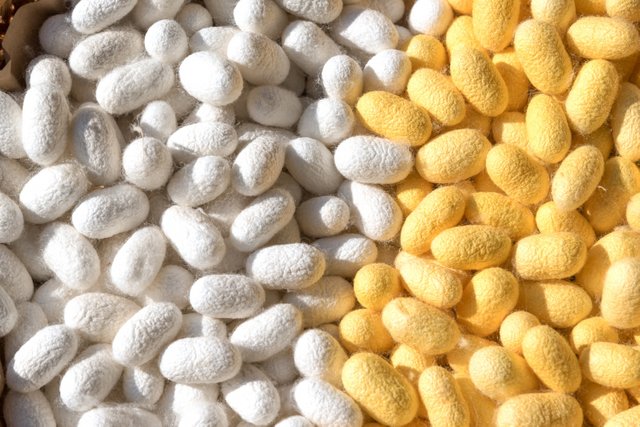The Art of Silk Worm Cultivation to Produce a Luxurious Silk Product

Cultivating silkworms, a practice known as sericulture is a labor-intensive and precise process that has been perfected over centuries. It involves the careful nurturing of silkworms (Bombyx mori) from the egg stage to the cocoon stage, where they spin silk fibres.
There are many processes involved in the production of silk warms before converting those silk threads to a Silk Product.
Selecting Mulberry Trees: The process begins with the cultivation of mulberry trees (genus Morus) because silkworms exclusively feed on the leaves of these trees. Mulberry leaves are rich in nutrients and provide the essential food source for silkworms.
Egg Stage: Silk production starts with the eggs of the silkworm. Female silkworm moths lay hundreds of eggs on specially prepared paper sheets. These eggs are then incubated at a controlled temperature and humidity until they hatch, typically within 10-12 days.
Feeding Silkworms: Once the eggs hatch, tiny silkworm larvae emerge, often referred to as "silkworm caterpillars." These larvae are extremely voracious eaters and are fed mulberry leaves several times a day. As they grow, they moult or shed their skin several times.
Moulting Stages: Silkworms go through several moulting stages, known as instars, during their growth. With each moult, they outgrow their current skin and shed it to reveal a new, larger one. The number of moulting stages varies but typically ranges from four to six.
Cocoon Formation: After reaching their final instar, silkworms undergo a transformation. They secrete a viscous fluid from specialized glands, which hardens into fine threads of silk as it comes in contact with the air. The silkworms spin these threads around themselves to create a protective cocoon. The spinning process lasts for about 2-3 days.
Harvesting the Cocoon: Once the spinning is complete, the cocoons are carefully harvested. Each cocoon contains a continuous silk filament that can be as long as 900 meters (approximately 3,000 feet). This delicate filament is what Silk Producers are after.
Boiling and Unspooling: To obtain silk from the cocoon, the harvested cocoons are boiled in hot water to soften the sericin, a protein that holds the silk threads together. Boiling also kills the pupa inside the cocoon. After boiling, the softened cocoon is unspooled to collect the silk filament. This process is known as reeling.
Spinning and Weaving: The collected silk filaments are spun into threads and then woven into fabric. The weaving process may involve various techniques and designs, depending on the type of Silk Product being produced.
Dyeing and Finishing: The woven silk fabric is dyed to achieve the desired colours and pattern. After dyeing, it undergoes finishing processes, which can include washing, stretching, and pressing to enhance its texture and appearance.
Final Products: The finished Silk Product can be used to create a wide range of products, including sarees, clothing, scarves, ties, and more. It is valued for its luxurious texture, sheen, and comfort.
Silkworm cultivation is a meticulous and time-intensive practice that requires close attention to detail, as the quality of the final Silk Product depends on the health and care of the silkworms throughout their life cycle. The process is not only a testament to human craftsmanship but also to the intricate biology of the silkworm itself.
To get more information related to silkworm cultivation please visit our website https://reshamindia.in/